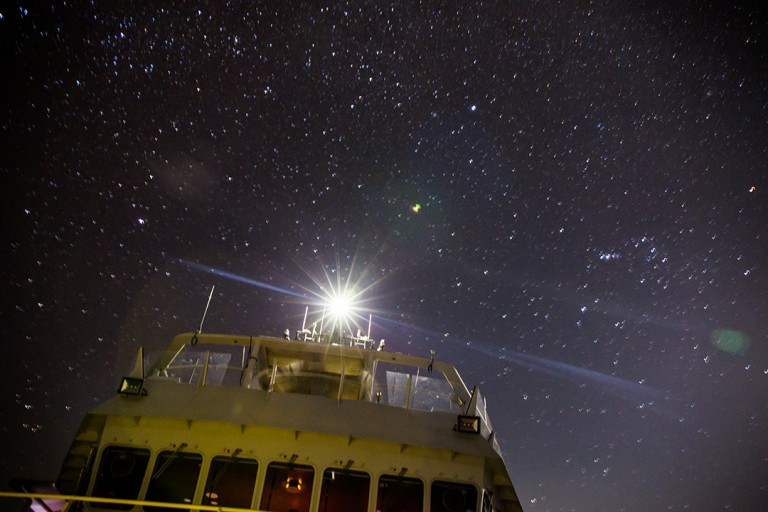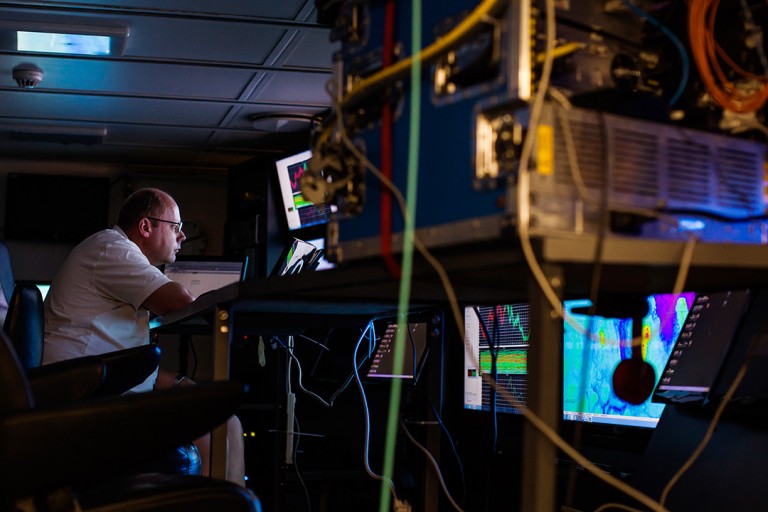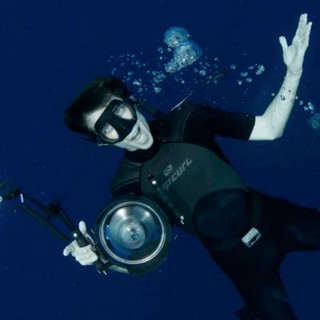Quite accidentally, by trying to meet deadlines of U.S. East Coast media, I came to experience the nocturnal cycle of ship life. Though night watch is a quiet time (if things are going well, anyway), it is not an inactive spell. Operations onboard research vessel Falkor occur twenty-four hours a day. If the ship were anchored overnight, then the science team would only get to use Falkor half of the time. “At the moment we are doing overnight mapping, and without that information we wouldn’t be able to steam about quite so freely during the day. The maps made at night are used to help navigate in the areas we operate in”, says Second Officer Oliver Hurdwell.

Night Watch
While working during the night is not for everyone, some of Falkor’screw really like it. “I find it enjoyable”, says Hurdwell, “some people find it a bit of a drag, but my favorite watch is the 12-4 am shift. At that time of night, you can get on with the work at hand, and it is quite likely that it will follow exactly the plan that has been hashed out the evening before. Day operations are more dynamic, which is why we can deal with less people at night.”

Third Engineer Ramon Tabaque agrees, “The night watch is one of my favorites – in my previous job I did it for ten years!” The night shift gives Ramon time by himself. His routine is steady; after handover from the previous person on watch, he makes a safety round every half-an-hour, in which he makes inspections for leaks, fire, or any other risks. Ramon also starts water production with the massive reverse osmosis seawater desalination unit. There is always something different to do – inventory, cleaning, minor repairs, night may be quiet but it is always active.

The night watch secret

Hurdwell says the biggest hurdle is getting started. “The most difficult thing about night watch is altering your sleep patterns for the first time. To sleep at strange times during the day and get slightly fragmented sleep, doesn’t fit in the normal circadian rhythms”. To help with the adjustment, many watchers use the same tool, music. Jason Garwood, Falkor’s Safety Officer, says the International Maritime Organization actually encourages listening to tunes while on night watch. “There are official guidelines that say watch keepers should listen to music to avoid fatigue. Obviously not so loud that they can’t hear the radio or alarms, but in the background at a reasonable level.”
Paul Duncan, one of the Marine Technicians on board likes his music poppy and energetic, especially when he is manning the ship’s multi-beam sonar incoming figures. “Checking mapping data isn’t very stimulating over a period of hours, but it has got to be done. Music helps pass the time enjoyably.” Tabaque sticks with classics like Ritchie Valens and Bob Marley, while Hurdwell plays cool jazz. At least that was what he was playing when I visited the bridge at 3 am. He admits, “the music I listen to gets trashier and more pop based the more tired I get.”
The unsung guardians of the night shift, while not as visible, lay the infrastructure and safety foundations for a successful mission. By gathering data that is used during cruises and maintaining the working aspects of the ship, they optimize research productivity on the sea.


